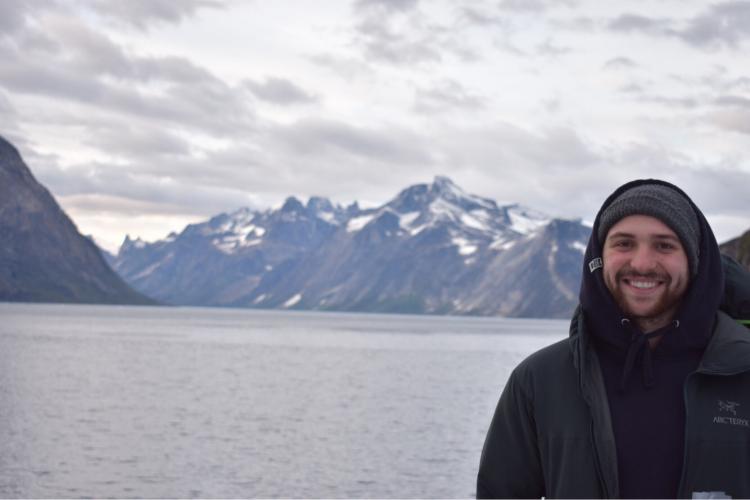Traveling through the North Atlantic, the captain of research vessel Neil Armstrong had to repeatedly navigate around harsh weather that would entail winds near 60 mph and 24-foot swells. But those stormy seas, EJ Rainville said, will provide key data on the impact of climate change.
“On the particularly drastic side, it the polar-subpolar regions warm too much, the formation of cold deep waters will be reduced, which could slow down ocean circulation or change it in some way that could have profound effects on our climate,” said Rainville, a mechanical engineering student.
Beginning in August and ending just last week, Rainville was aboard the 238-foot Neil Armstrong, working with the Overturning in the Subpolar North Atlantic Program (OSNAP), spearheaded by more than 20 scientists from around the world. OSNAP has monitored the ocean’s movements across the Arctic and North Atlantic Ocean, knowing that variations in world climate and weather are caused by changes that occur in the ocean and its overall circulation.
The North Atlantic has been called the engine that drives the global oceanic circulation, which makes it pivotal for the state of the earth’s climate.
“The goal of the project is to understand the ocean overturning circulation – the formation of cold deep waters from warm equatorial waters in near-polar regions – and to understand the water mass and heat budgets in the subpolar North Atlantic region,” Rainville said.
While Rainville grew up in land-locked Colorado, at Cal Poly, he became involved in ocean measurements through Ryan Walter, an assistant professor of physics, who studies physical oceanography.

EJ Rainville’s time on the RV Neil Armstrong offered amazing views, including this rainbow.
“Locally, we are investigating how hydrodynamics influence local ecological habitats,” Walter said. “We are also looking at how a particular type of underwater wave in the ocean is affected by kelp forests.”
For that, Rainville has helped with analysis of ocean currents and internal waves in underwater kelp forests and with driving activities related to setting up underwater instruments, among other things. He has also helped with outreach efforts at the Cal Poly Pier Open House.
In December, an oceanic paper Rainville presented about their research at the American Geographical Union Fall Meeting in New Orleans won the Outstanding Student Paper Award. The summer before that, in 2017, he worked in the physical oceanography department at the Woods Hole Oceanographic Institution in Woods Hole, MA, as a student fellow. The chief scientist on the last leg of the OSNAP was from the Woods Hole Oceanographic Institution, which also operates the Navy-owned Neil Armstrong.

A view from the research vessel Neil Armstrong.
The crew boarded the vessel on August 24 in Iceland, then headed for the western coast of Greenland in the Labrador Sea. Rainville worked as a Conductivity, Temperature and Depth (CTD) watchstander, which means he helped operate the CTD instrument, which allowed the team to measure profiles of temperature and salinity.
Rainville worked the watch from 2 a.m. until 10 a.m. And when he wasn’t working, he read, worked out in the ship’s gym or talked with scientists. He also took in the breathtaking sites.
“The landscapes are very dramatic,” he said. “It seemed like every time you would look up, there was a new mountain range or new glacier.
While the landscapes would be serene, the ship often had to return to shore or protected areas to avoid the not-so-serene weather.
“What surprised me most about working on the ship was how fast plans can change,” he said. “We needed to be very flexible in order to accommodate the drastic changes in weather, so we always needed a plan B or plan C.”


